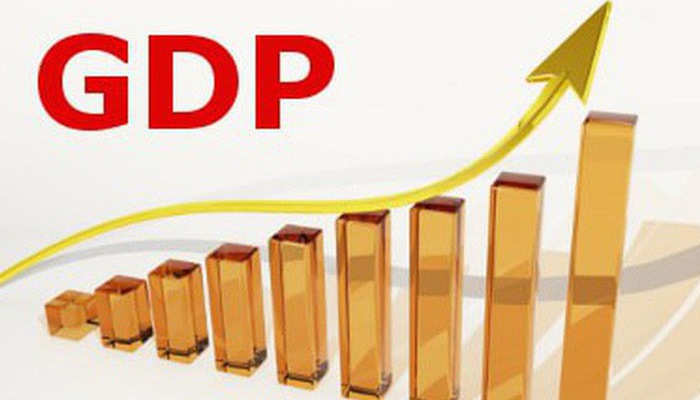India’s nominal GDP growth could be 50 bps higher than Budget assumption: Fin Min source

India’s nominal GDP growth could be 50 bps higher than Budget assumption: Fin Min source
According to a senior finance ministry official, the current growth and inflation trends suggest that India’s nominal gross domestic product (GDP) growth could potentially reach 11 percent in the fiscal year 2023-24. This projection is 50 basis points (bps) higher than the assumption made in the Budget for the current fiscal year.
The official explained that with Wholesale Price Index (WPI)-led inflation expected to move out of negative territory soon, the finance ministry is considering a deflator of 4-4.5 percent for their estimates of nominal GDP. As a result, they do not anticipate tax receipts (which are closely tied to nominal GDP projections) falling below 10.5 percent and believe that the country could even reach a growth rate of 11 percent.
The nominal GDP growth assumption is a crucial figure in the budgetary process, as it forms the basis for various estimates including fiscal deficit and tax collection growth. A higher nominal GDP figure compared to the budgeted one could indicate that the government’s tax collection for the fiscal year 2023-24 might exceed the projections outlined in the annual financial statement. This would provide the central government with more flexibility in achieving its fiscal deficit target.
These projections highlight the importance of accurately assessing economic trends and inflationary pressures when formulating budgetary assumptions. The ability to anticipate and adapt to changing economic conditions is critical for effective fiscal planning and management. For the most current and accurate information, it’s advisable to follow official government announcements and economic indicators.
The Indian government has set its gross tax collection target at Rs 33.6 lakh crore for the fiscal year 2023-24. This figure represents a 10.4 percent increase compared to the projected Rs 30.4 lakh crore in the revised estimates for the previous fiscal year. The government also aims to reduce the fiscal deficit to below 4.5 percent of GDP by the fiscal year 2025-26, with the fiscal deficit target for the current fiscal year set at 5.9 percent of GDP.
While the budget had initially presented a more conservative nominal GDP growth estimate, the Economic Survey that was released a day prior to the budget projected a baseline GDP growth of 11 percent in nominal terms and 6.5 percent in real terms for the fiscal year 2023-24.
Notably, in the preceding financial year, the actual nominal GDP growth surpassed the budgeted assumption of 11.1 percent. This provided the government with a surplus of over 30 basis points (bps) to achieve its fiscal deficit target of 6.4 percent of GDP.
According to the senior finance ministry official, the finance ministry’s internal estimations for nominal GDP growth for the current fiscal year are at least 6 percent. This aligns with the range of real GDP growth of 6-6.8 percent projected in the Economic Survey. It’s worth noting that the budget does not explicitly present projections for real or inflation-adjusted GDP growth.
These insights into the government’s fiscal plans highlight the complex interplay between economic growth, fiscal targets, and tax collections. The government’s ability to adapt its fiscal policies in response to economic realities is vital for ensuring stability and sustainable development. For the most up-to-date information, it’s recommended to follow official government announcements and economic indicators.
The central government of India has experienced the benefits of two consecutive years of robust nominal GDP growth, primarily driven by high inflation rates and a favorable base effect. Despite earlier speculations suggesting potential challenges arising from slowing growth and decreasing inflation affecting tax collections and nominal GDP projections, recent data trends paint a different picture.
According to the senior finance ministry official, the current data indicates that the concerns surrounding nominal GDP assumptions for the fiscal year 2023-24 might be unfounded. With retail inflation (CPI) expected to remain above 5.5 percent throughout the current fiscal year and Wholesale Price Index (WPI)-led inflation anticipated to emerge from negative territory soon, the conditions seem favorable for meeting the projected nominal GDP growth figures for 2023-24.
While India’s WPI continued to experience deflation, contracting by 1.36 percent in July, experts predict that it could turn slightly positive in the near future due to the upward trend in food prices. On the other hand, the Consumer Price Index (CPI)-led inflation surged to a 15-month high of 7.44 percent in July. The Reserve Bank of India (RBI) also revised its inflation forecast for the fiscal year 2023-24, raising it by 30 basis points to 5.4 percent on August 10.
These insights suggest that despite certain challenges, India’s economic landscape remains dynamic and capable of adapting to changing conditions. The interplay between inflation, economic growth, and fiscal policies requires careful monitoring and prudent adjustments to ensure a stable and sustainable trajectory. For the latest updates and reliable information, it’s recommended to follow official economic reports and announcements from relevant authorities.




